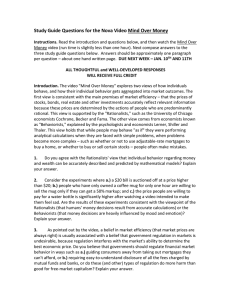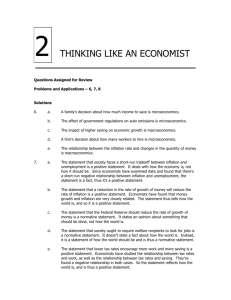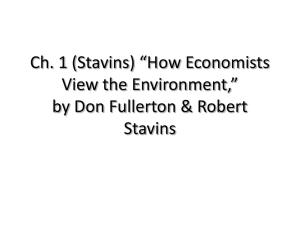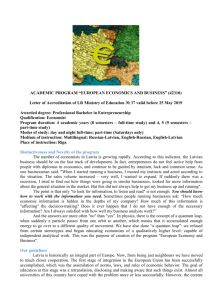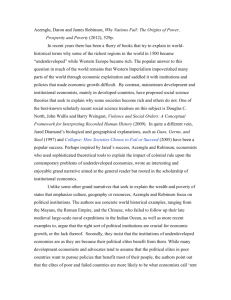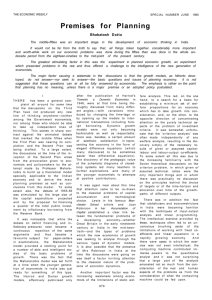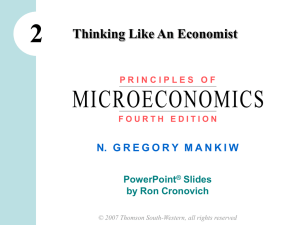Economiststerminology
advertisement
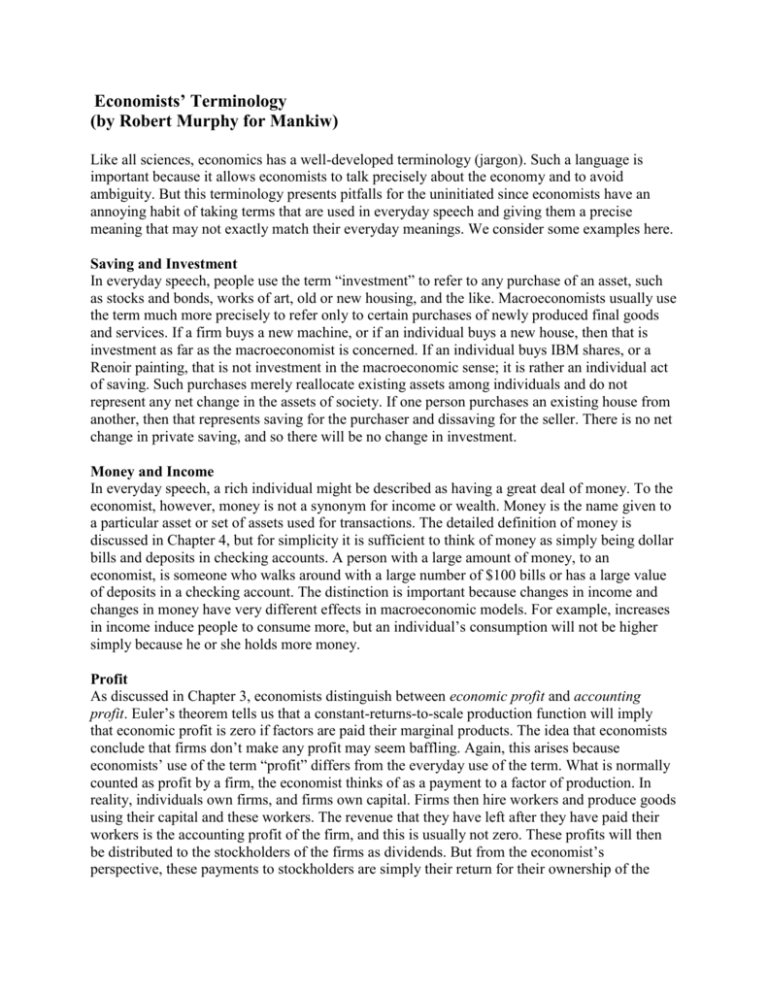
Economists’ Terminology (by Robert Murphy for Mankiw) Like all sciences, economics has a well-developed terminology (jargon). Such a language is important because it allows economists to talk precisely about the economy and to avoid ambiguity. But this terminology presents pitfalls for the uninitiated since economists have an annoying habit of taking terms that are used in everyday speech and giving them a precise meaning that may not exactly match their everyday meanings. We consider some examples here. Saving and Investment In everyday speech, people use the term “investment” to refer to any purchase of an asset, such as stocks and bonds, works of art, old or new housing, and the like. Macroeconomists usually use the term much more precisely to refer only to certain purchases of newly produced final goods and services. If a firm buys a new machine, or if an individual buys a new house, then that is investment as far as the macroeconomist is concerned. If an individual buys IBM shares, or a Renoir painting, that is not investment in the macroeconomic sense; it is rather an individual act of saving. Such purchases merely reallocate existing assets among individuals and do not represent any net change in the assets of society. If one person purchases an existing house from another, then that represents saving for the purchaser and dissaving for the seller. There is no net change in private saving, and so there will be no change in investment. Money and Income In everyday speech, a rich individual might be described as having a great deal of money. To the economist, however, money is not a synonym for income or wealth. Money is the name given to a particular asset or set of assets used for transactions. The detailed definition of money is discussed in Chapter 4, but for simplicity it is sufficient to think of money as simply being dollar bills and deposits in checking accounts. A person with a large amount of money, to an economist, is someone who walks around with a large number of $100 bills or has a large value of deposits in a checking account. The distinction is important because changes in income and changes in money have very different effects in macroeconomic models. For example, increases in income induce people to consume more, but an individual’s consumption will not be higher simply because he or she holds more money. Profit As discussed in Chapter 3, economists distinguish between economic profit and accounting profit. Euler’s theorem tells us that a constant-returns-to-scale production function will imply that economic profit is zero if factors are paid their marginal products. The idea that economists conclude that firms don’t make any profit may seem baffling. Again, this arises because economists’ use of the term “profit” differs from the everyday use of the term. What is normally counted as profit by a firm, the economist thinks of as a payment to a factor of production. In reality, individuals own firms, and firms own capital. Firms then hire workers and produce goods using their capital and these workers. The revenue that they have left after they have paid their workers is the accounting profit of the firm, and this is usually not zero. These profits will then be distributed to the stockholders of the firms as dividends. But from the economist’s perspective, these payments to stockholders are simply their return for their ownership of the firm’s capital. In other words, they are a payment to a factor of production and do not represent economic profit. Real and Nominal Variables One of the most important distinctions in macroeconomics, and one that recurs throughout the textbook, is that between real and nominal variables. The distinction is actually very simple; acquiring the habit of keeping this distinction clear is more difficult, yet crucial to a good understanding of the economy. A nominal variable is measured in dollar terms. A real variable is measured in terms of goods (units of GDP). The difference matters whenever there is inflation or deflation. In times of inflation or deflation, the general price level is changing. Since the price level represents the price of a typical unit of GDP, changes in the price level represent changes in the dollar value of GDP, or, equivalently, changes in the real value of a dollar. Stocks Versus Flows Economists distinguish between variables know as “stocks” and variables known as “flows.” Stocks are measured at a point in time, whereas flows are measured over time. In the loanable funds model, saving is measured as a flow variable since it is the difference between income and spending, which are flows. Likewise, investment is a flow variable reflecting the purchase of new capital goods. A positive level of saving will increase a person’s wealth, which is a stock and is measured at point in time. A positive level of investment will increase the capital stock. The classical model discussed in this chapter abstracts from changes in the stock of wealth and capital, taking their values as given. In Chapters 7 and 8, the model of economic growth relaxes this assumption.
